Today's Thursday • 10 mins read
— By Dr. Sandip Roy.
Trypophobia, also known as “holes in hand phobia,” is the visceral disgust caused by seeing a group of small sunken holes in someone’s body, such as their hand.
When you see these densely packed holes, your skin crawls into gooseflesh, and your hairs stand on end. You quickly turn away, nervous, never wanting to look back at those holes.
Trypophobia is derived from the Greek word trypa (τρύπα), which means to punch, drill, or bore holes, and the word phobia, which means fear.
Key Takeaways:
- Trypophobia is the fear of clusters of circular holes or bumps. The term was coined in 2005.
- Trypophobia affects up to 10–18% of people (Cole, 2024), and is more common in women and people with anxiety disorders.
- Short-term effects include anxiety, disgust, and goosebumps. Long-term effects include avoidance behaviors, social isolation, and persistent anxiety.
By the way, do you know what’s autophobia?
Trypophobia: What Research Tells Us
Research suggests that trypophobics are afraid of clustered holes rather than individual holes. They feel strong repulsion on seeing or imagining a pattern of clustered holes on a human body part.
Why this fear of clustered holes? The intense disgust in trypophobics may be created by the possibility of skin disease that must be avoided.
A recent study found that just seeing pictures of people with signs of infection activates our immune response.
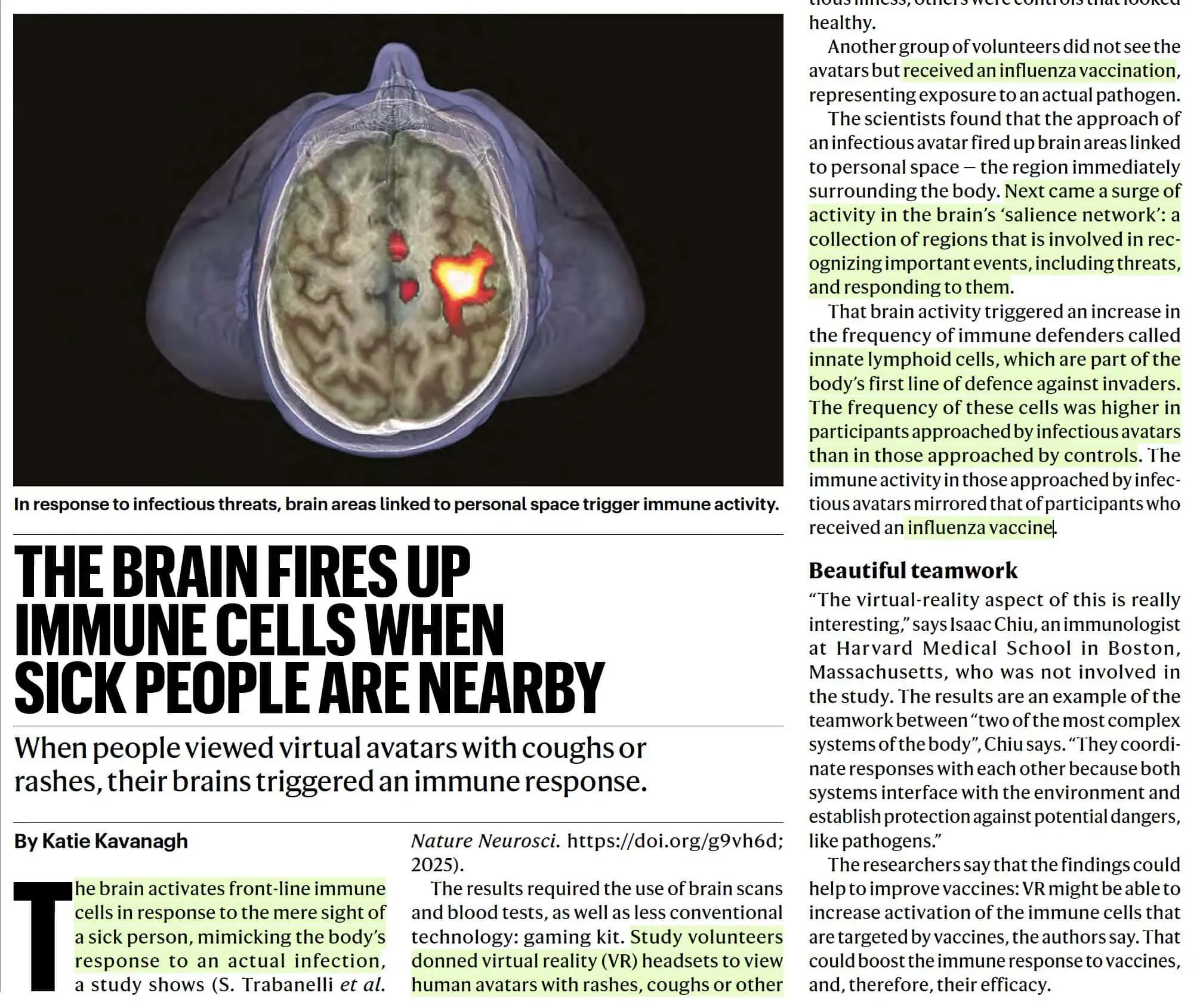
Most trypophobic images, like a beehive or bubble wrap, have certain spatial properties (mostly a pattern of light and dark enhancing the depth of the holes) that induce unpleasant sensations.
- Martinez-Aguayo & Lanfranco (2018) describe trypophobia as a fear of images with high-contrast energy at low and midrange spatial frequencies, such as holes and repetitive patterns.
- Imaizumi (2016) refers to trypophobia as disgust for a cluster of objects and suggests that it is an extension of disgust for dangerous objects.
Vlok-Barnard & Stein (2017) found that 60.5% reported mostly disgust, 11.8% reported only disgust, 5.1% reported mostly fear, 1% experienced only fear, and 21% experienced the same amount of fear and disgust.
- Trypophobia is primarily a sympathetic nervous system response, our fight-or-flight response.
- Most trypophobic people show disgust as their main symptom. Some report feeling shuddered, skin-crawling, sweating, palpitations, nausea, or panicky.
- Others reported goosebumps, itchiness, body tremors, feeling uneasy, eyestrain, and even visual distortions or illusions.
How To Find Out If You Have Trypophobia
You only need to look at a picture of holes sitting together to find out if you have trypophobia.
Many believe almost all of us have trypophobia, but we don’t realize it until we see it once. Thereafter, even the mere thought of such holes can trigger our phobia.
A better way could be to get tested on the Trypophobia Questionnaire (TQ), a 17-item scale developed by Le, Cole & Wilkins (2015) to evaluate trypophobic symptoms.
The “fear response” (phobic reaction) can be checked by seeing less-triggering images of honeycombs or beehives, coral, sea sponges, lotus seed pods, strawberries, lava stones, pomegranates, bubble wraps, or cluster-eyes seen in close-ups of housefly-heads.
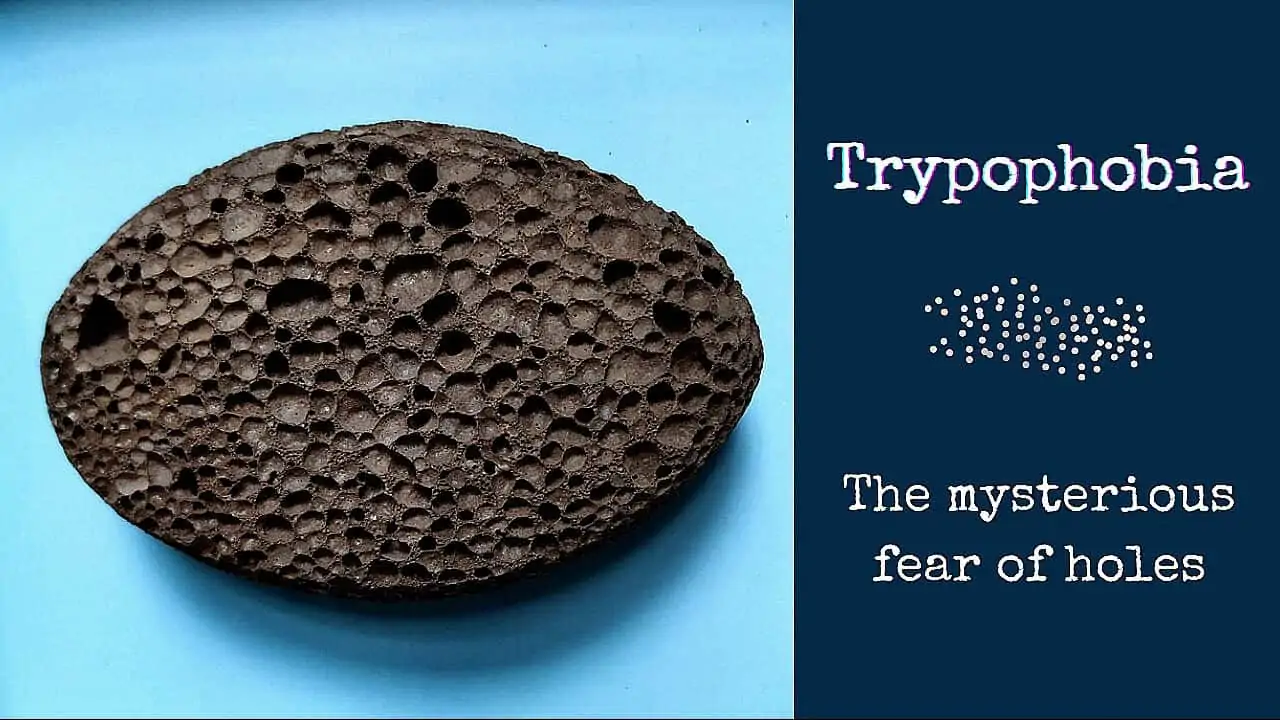
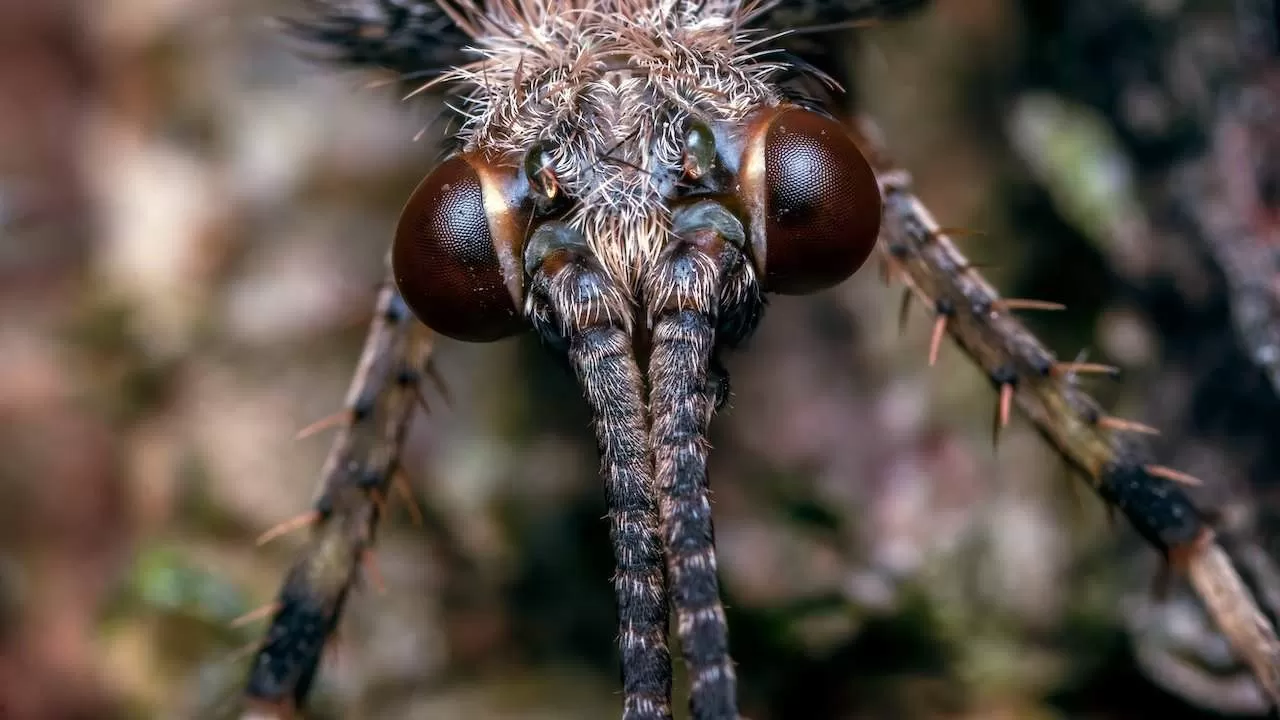
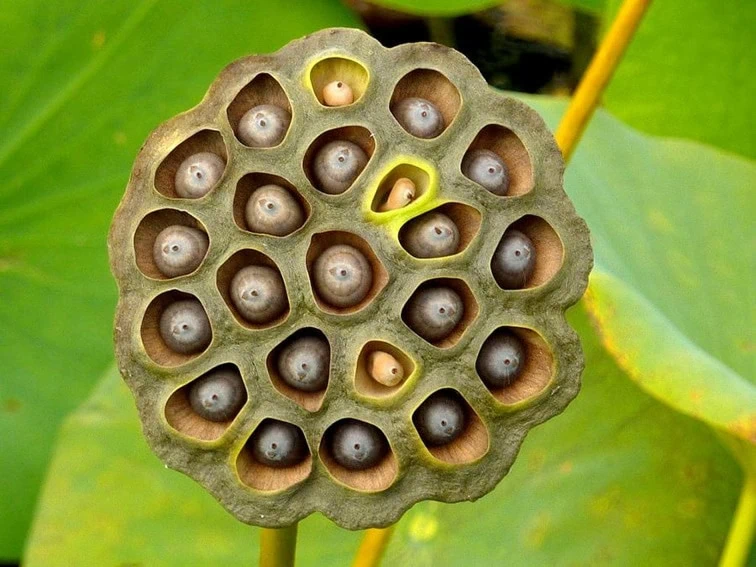
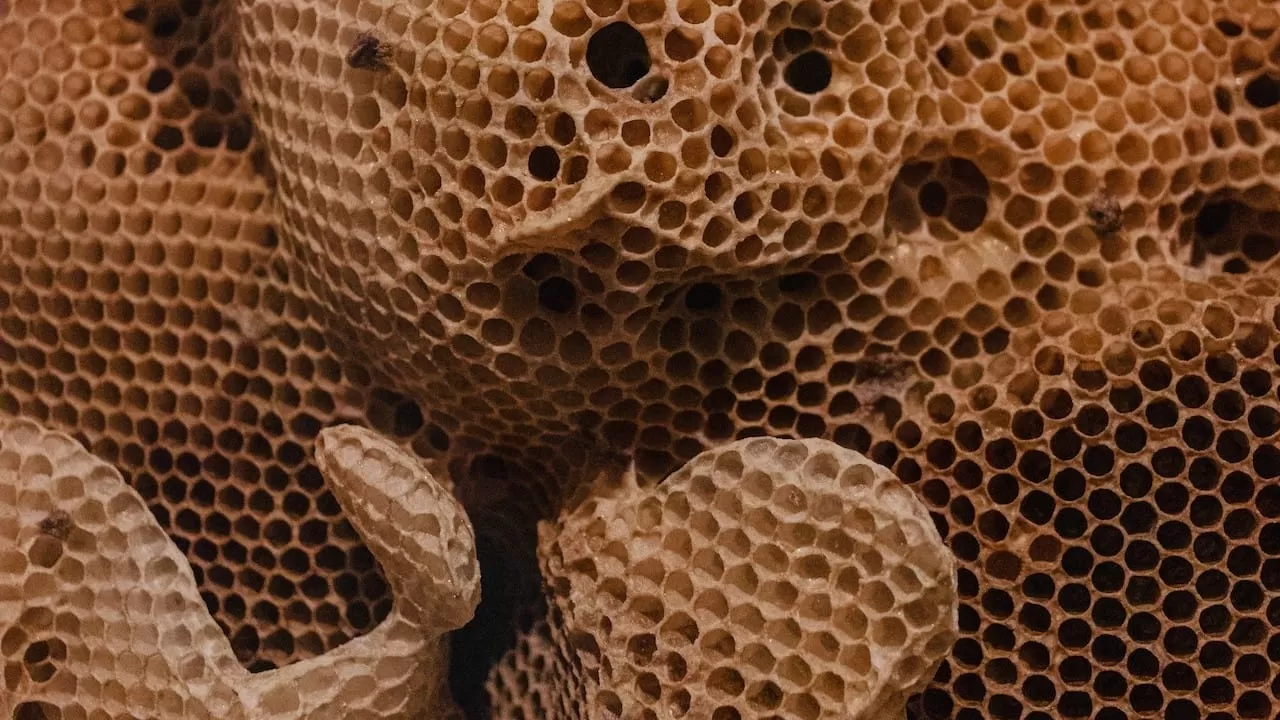
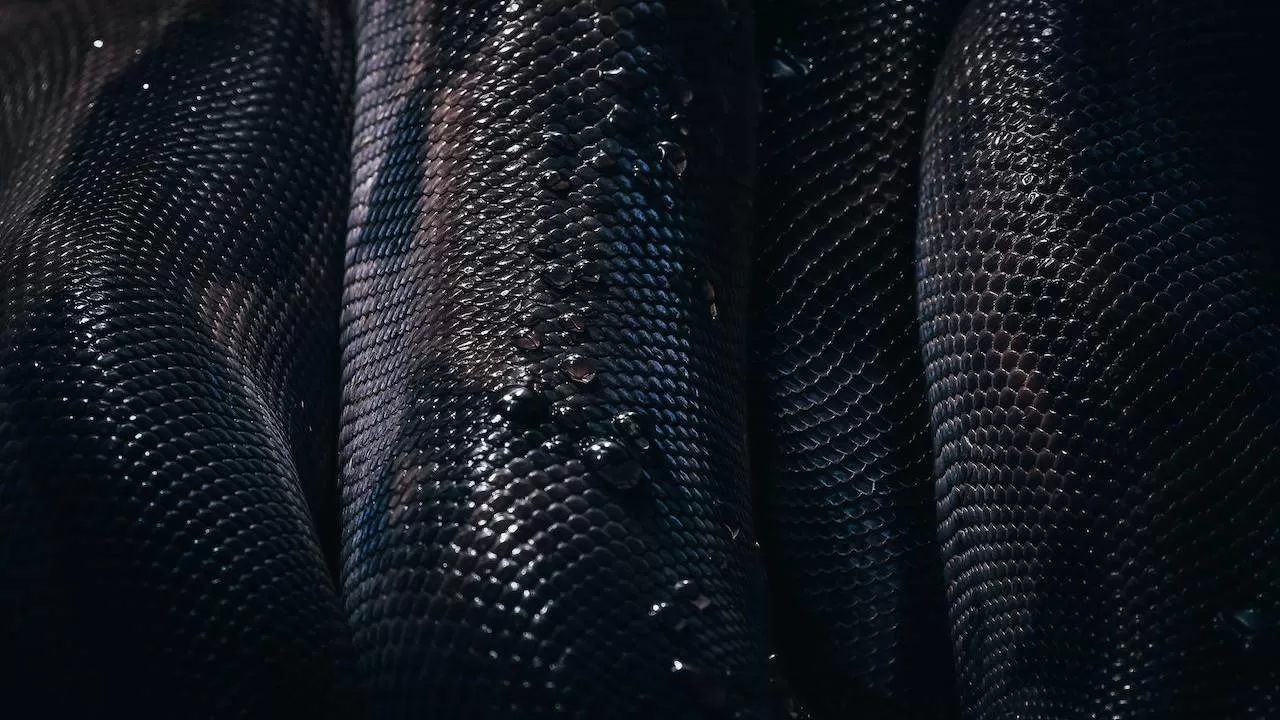
Symptoms of Trypophobia
Trypophobics react with fear, disgust, or both, despite knowing that the images of holes are harmless.
- Disgust: Disgust is the most dominant emotion in trypophobia.
- Anxiety: Seeing these patterns can also trigger feelings of anxiety, fear, fear, or even panic.
- Physical symptoms: Itching, goosebumps, skin crawling, nausea, shaking or trembling, shortness of breath, fast heartbeat, sweating, choking or dry mouth, or pale skin.
- Avoidance: People with trypophobia may avoid objects or situations that they know will trigger their symptoms.
What Causes Trypophobia?
- Kupfer & Le (2017) say trypophobia is “an overgeneralised disease avoidance response.”
- Martínez-Aguayo & Lanfranco (2018) propose “trypophobia may be caused by both evolutionary factors and operant conditioning, where the natural reaction acquired through evolution is disgust towards trypophobic images.”
So, trypophobia has an evolutionary basis. This is understandable because clusters of holes can be:
- a sign of humans carrying skin diseases, or
- resemble the markings of poisonous animals that.
Theories about what causes trypophobia:
- Evolutionary theory: Trypophobia helped our prehistoric ancestors avoid dangerous or harmful animals. Trypophobia is a learned fear from our evolutionary instincts to flee on seeing a pattern of holes, bumps, or spots on the skin of a poisonous or disease-carrying animal, like snakes (Cole & Wilkins, 2013). Researchers Kupfer and Le (2017) suggest that the phobia is caused by hole clusters that look similar to ectoparasites and skin-transmitted pathogens.
- Disgust theory: This theory suggests clusters of holes or bumps can be seen as being dirty or contaminated, which can trigger the disgust response. This response can lead to feelings of anxiety, fear, or even nausea. Yamada and Sasaki (2017) suggested that there might be a link between aversion to irregular clusters of pustules or roughly circular shapes on human skin and trypophobia.
- Learning theory: This theory suggests that trypophobia can be learned through experience. For example, if you had a negative experience with a cluster of holes or bumps as a child, you may develop a fear of these patterns. A more recent theory about trypophobia is that it is an involuntary reaction to skin eruptions (dermatosis), though the theory has not yet found wide support.
- Neurological theory: This theory suggests that trypophobia may be caused by a neurological abnormality. For example, people with trypophobia may have a different way of processing visual information than people who do not have the condition. This could lead them to see clusters of holes or bumps as being more threatening or dangerous than they actually are. Trypophobia may also be triggered by viewing certain geometric patterns (Wikins et al., 1984). The discomfort triggered by clusters of concave objects is not significantly more than that by clusters of convex objects (Le et al., 2015).
If you think you may have trypophobia, talk to a doctor or mental health professional. They can help you determine if you have the condition and can provide treatment options if necessary.
Is Trypophobia Common In Some Personalities?
Here are some research findings that link trypophobia to social anxiety, generalized anxiety, high empathy, OCD, and a history of skin diseases:
- Le, Cole & Wilkins (2015) found a weak relationship between trypophobia and general anxiety.
- Imaizumi & colleagues (2016) suggest that trypophobia proneness may be related to empathic traits, like perspective-taking, empathic concern, and personal distress. Patients with this phobia often have generalized anxiety disorder (GAD) and social anxiety (SA).
- Chaya & colleagues (2017) found people with social anxiety were more likely to be uncomfortable with images of clusters of eyes and faces than people without social anxiety. This suggests that there may be a relationship between trypophobia and social anxiety.
- Vlok-Barnard & Stein (2017) found that most of the participants who suffered from trypophobia fulfilled the DSM-5 criteria for a specific phobia, experiencing disgust rather than fear of clusters of holes. However, they did not meet the clinical criterion of distress or impairment. Only a small percentage of them fulfilled the DSM-5 criteria for obsessive-compulsive disorder (OCD).
- Can & Zheng (2017) questioned whether trypophobia is really a phobia, given that previous reports showed people commonly feel disgust rather than fear when seeing trypophobic images.
- Yamada and Sasaki (2017) found that participants with a history of skin problems reported experiencing significantly higher discomfort looking at trypophobic objects than those without skin problems history.
What Is The Treatment of Trypophobia?
Of course, it needs medical treatment if it’s a physical disease of the skin. But if trypophobia to pictures of clustered holes is overwhelming, it may need avoidance or psychological therapy.
While there is no psychological treatment specific to trypophobia, options that help eliminate phobias may be helpful:
- Cognitive-behavioral therapy (CBT): CBT is a type of therapy that can help people change the way they think about and react to their fears.
- Flooding: A behavior therapy strategy in which the individual is deliberately exposed to a high-intensity anxiety-producing event or stimulus, either described or genuine, with no attempt to reduce or avoid anxiety or fear throughout the exposure. A person suffering from claustrophobia, for example, may be required to spend extended periods of time in a small room.
- Exposure Therapy or Graded Desensitization: Exposure therapy involves gradually exposing people to their fears in a safe and controlled environment. This can help people learn to manage their anxiety and fear. It is a technique of behavioral therapy based on classical conditioning. It was created by Wolpe in the 1950s. Using counterconditioning, this therapy tries to progressively replace the fear response of a phobia with a relaxation response to conditional stimuli.
- Medications: Since it is seen by researchers as more of an anxiety condition than a phobia, anti-anxiety medications may help.
- Meditation: Meditation can help people relax and reduce their anxiety levels.
If you think you may have trypophobia, talk to a doctor or mental health professional.
Is Trypophobia A Real Phobia?
Millions of people across the world claim to have trypophobia. Yet it is not yet a recognized phobia by either the Diagnostic and Statistical Manual of Mental Disorders 5 (DSM-5) or the American Psychiatric Association (APA).
Researchers validate its presence in some people. But, since most trypophobics show disgust instead of fear as their main symptom, it is more of an anxiety disorder than a phobia.
However, it is believed that it affects around 20% of the population, causing sufferers to experience goosebumps, apprehension, panic assaults, and nausea. Here are some research findings:
- A 2017 study (Disgusting clusters: trypophobia as an overgeneralized disease avoidance response by Kupfer & Le) suggests this aversion to clusters is “an evolutionarily prepared response” that helps avoid a class of stimuli resembling infectious parasites and insects.
- The study authors found while normal, as well as trypophobic participants, showed aversion towards disease-relevant cluster stimuli, but only the trypophobic group showed aversion towards objectively harmless cluster stimuli that had no relevance to disease.
- Researchers Can, Zhuoran, & Zheng (2017), say it is questionable whether it is justified to legitimize trypophobia. They suggest the discomfort felt toward trypophobic images might be an instinctive response rather than an unconsciously learned association with venomous animals.
- Until this point, there were no images of disturbing, skin-crawling photos of pitted holes in the hand or makeup-created holes in the hand.
- The reason is, if you are trypophobic, as I am, please go through this post first, and only then watch the trypophobic image at your own risk.
- A skin condition that may trigger trypophobia is pitted keratolysis. It is a bacterial infection of the soles of the feet or the palms of the hands, causing pits or depressions in the top layer of the skin.
Warning: Trypophobia triggering image below:
⊝
⇩⇩
⇩
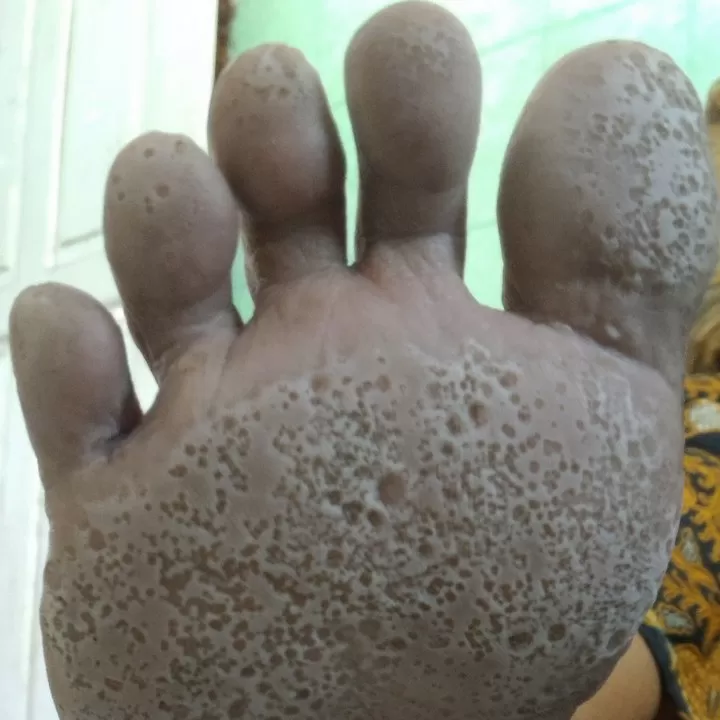
The following video grab is from a YouTuber makeup artist showing how to create the holes-in-hand effect. Be warned, it may cause a sudden sensation of itching or crawling of the skin, and strong disgust and revulsion.
Proceed with caution.
Warning: Trypophobia-triggering image below:
⊝
⇩⇩
⇩
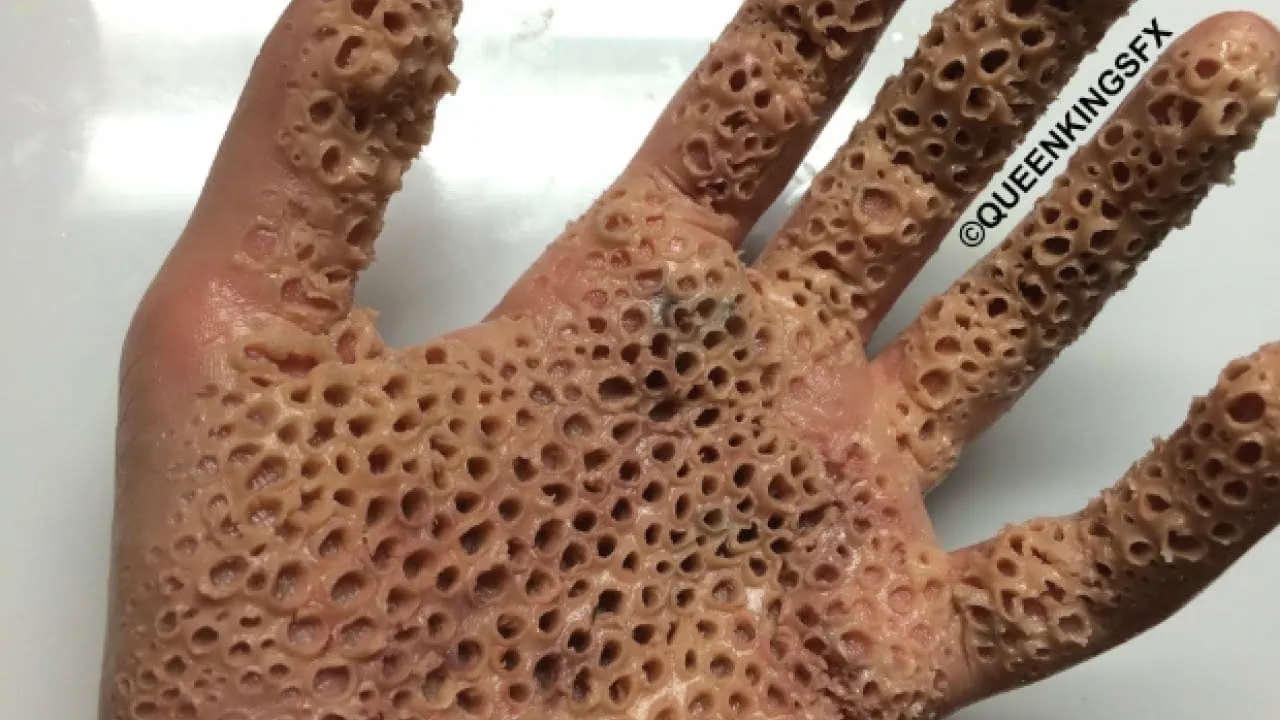
Final Words
Trypophobia may exist without the person knowing it themselves, and only makes its presence as a phobia when exposed to “holey-pattern” images.
• • •
√ Also Read: Fear Psychology: A Concise List of 30+ Human Phobias
√ Please share this if you found it helpful.
» You deserve happiness! Choosing therapy could be your best decision.
...
• Disclosure: Buying via our links earns us a small commission.